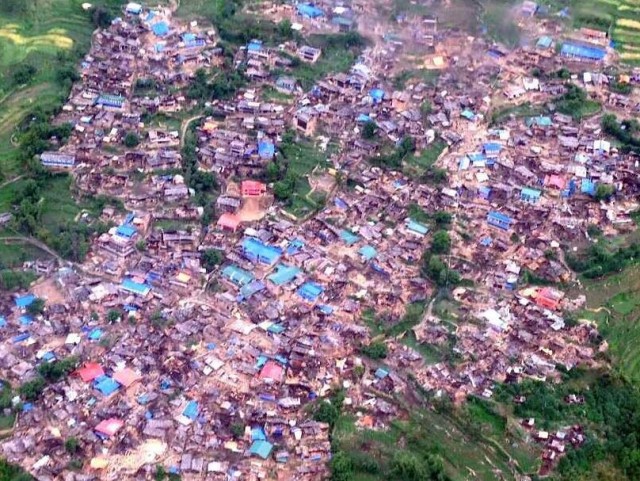27 April 2015
Nepal earthquake impact – the key questions
Posted by Dave Petley
Nepal Earthquake impact
Confusion continues to be a factor in determining the Nepal Earthquake impact – not unusual in any way, and not a criticism of anyone involved. The official death toll continues to increase – at the time of writing it is is 3351 (I strong recommend this twitter account for the latest information), and the total is rising quickly. But this remains much lower than we had anticipated for an event of this size in Nepal. This is partly because buildings in Kathmandu have performed far better than we had feared – at the moment the reasons for this are not clear, but it is very welcome.
But the key question is what is happening to the north of Kathmandu in the rural areas. This is the zone in which the peak ground accelerations are likely to have been highest, and it is also an area in which the houses are vulnerable (typically being constructed of weak materials) and most communities live on, or close to, slopes. These communities, which are remote at the best of times, may well have been very badly affected by the earthquake. An example appears to be the town of Barpak, high in the mountains in Gorkha District. This is the Google Earth image of the town before the earthquake:
.
Various images have appeared of the aftermath of the earthquake in this town, all unfortunately unverified. But for example, this image has been widely retweeted:
.
Both of these images suggest that losses in Barpak should be high. The key questions are:
1. To what degree are these losses included in the official totals (my guess would be they are not, but I might be wrong)?
2. To what degree is the damage in Barpak replicated elsewhere?
Because if the answer to 1. is that the official death toll does not account for the losses in Barpak, and to 2. is that this is replicated elsewhere then the losses are going to be much higher than at present. We can only hope that this is not the case.
Either way the pictures above suggest that a massive mobilisation of aid is going to be needed.





 Dave Petley is the Vice-Chancellor of the University of Hull in the United Kingdom. His blog provides commentary and analysis of landslide events occurring worldwide, including the landslides themselves, latest research, and conferences and meetings.
Dave Petley is the Vice-Chancellor of the University of Hull in the United Kingdom. His blog provides commentary and analysis of landslide events occurring worldwide, including the landslides themselves, latest research, and conferences and meetings.
Dave, does your speculation about the number of casualties help anyone ?
How about collecting information on the training of people how to best deal with such events in rural areas and then spreading the knowledge ?
I’m a frequent reader, but your last post nearly made me speechless.
[At the moment the reported losses from this earthquake are an order of magnitude lower than expected. My point is that it is impossible to know if this is representative; if it is not then the situation is going to turn ugly very quickly. There must be no temptation to think that the (comparatively) low death toll indicates that the situation is not desperate in the mountains. This is not speculation, it is explaining why we are so uncertain. There is a key role for lesson learning – this is not the time. D]
Landslides reported in Sikkim, India:
http://www.thehindu.com/news/national/nepal-quake-triggers-landslides-in-sikkim/article7141038.ece?ref=relatedNews